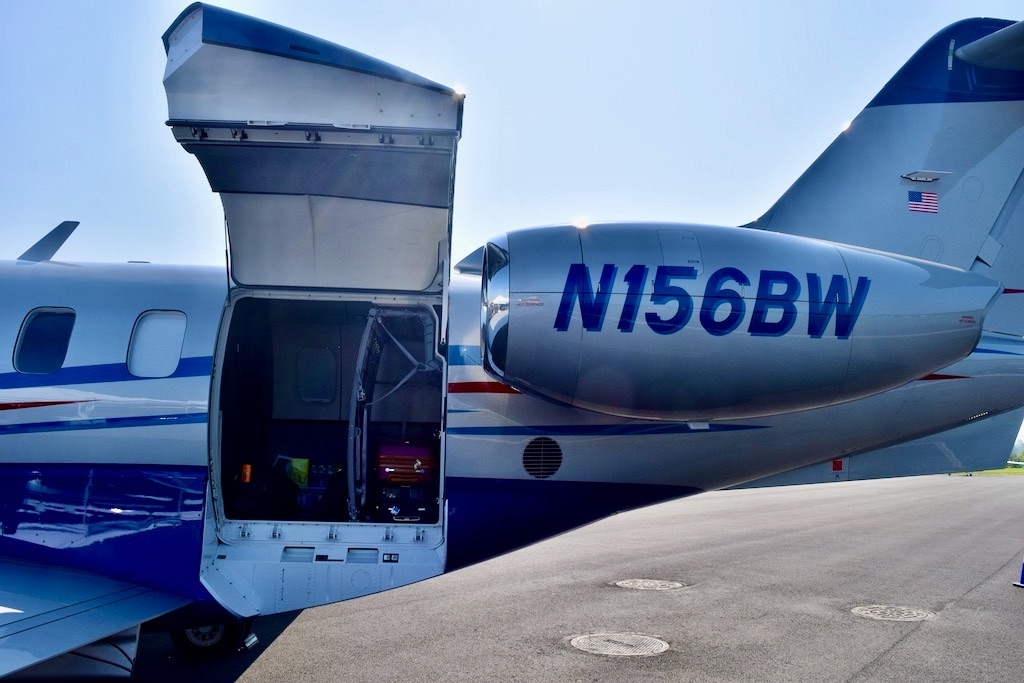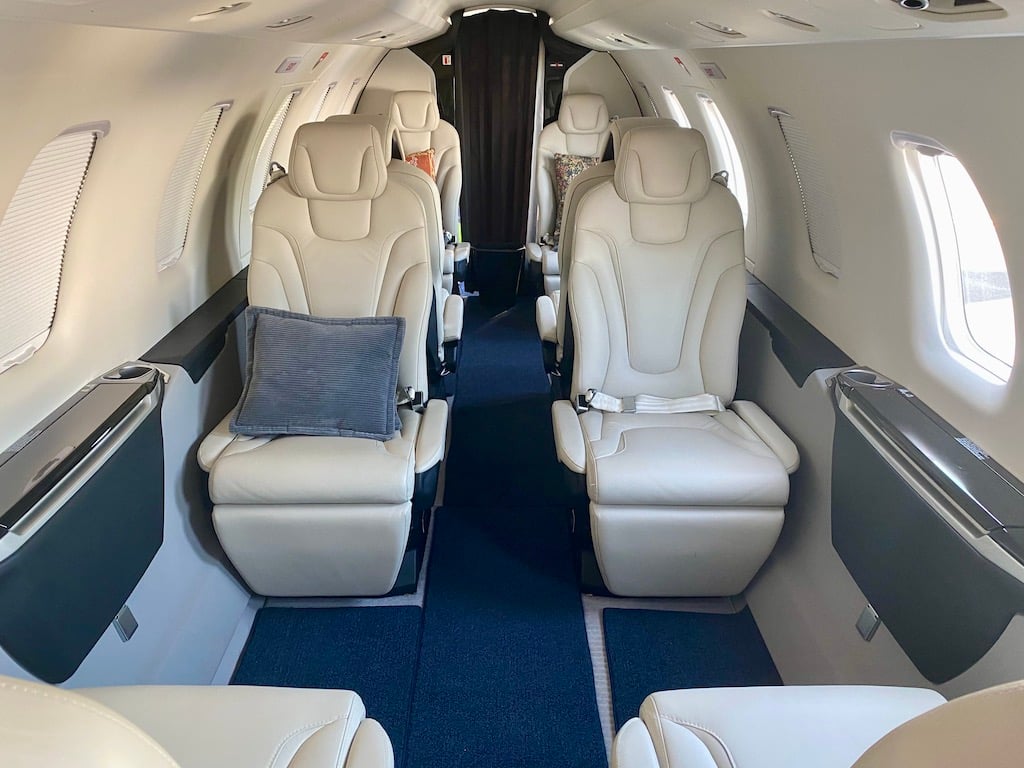
Certified in 2017, the PC-24 is the first jet produced by Switzerland's Pilatus Aircraft.
The versatility of the Pilatus PC-24 brings to mind the familiar analogy of the Swiss Army Knife.
Switzerland’s first homegrown business jet comes with all the accoutrements of executive travel, with 2,000-nm range, a flat floor, plush seating and a fully enclosed, forward lavatory. It also features a pallet-sized cargo door and is capable of short- and rough runway landings, making it popular for remote travel and missions.
“Whether you need to land on the grass runway at Venice’s Aeroporto Nicelli, or just want to turn heads at the Smiley Creek, Idaho backcountry strip, the PC-24 will take you there (and back),” says the manufacturer.
Pilatus Aircraft obtained EASA and FAA certification of its “Super Versatile Jet” in December 2017 following a nearly 12-year development effort. As of May, Aviation Week’s Fleet Discovery Database counted an in-service fleet of 236 PC-24s worldwide, with 125 in North America and 62 in western Europe.
Portsmouth, New Hampshire-based fractional operator PlaneSense, the jet’s launch customer in 2018, had a fleet of 13 PC-24s at the end of 2023, with five additional jets scheduled for delivery this year. Platoon Aviation of Hamburg, Germany, had seven. Australia’s Royal Flying Doctor Service operated three PC-24s for aeromedical transport.
Pre-Owned Market

The factory-new list price of the PC-24 was $8.9 million in 2018; this year it lists for $12.2 million equipped, according to the Aircraft Bluebook.
Market research company Amstat reported 16 PC-24s for sale in May, according to Southern Cross Aircraft Director Paul Hosmann. The International Aircraft Dealers Association’s Aircraft Exchange listed three for sale, including a 2019 model with 765 hr. offered by Southern Cross. Asking prices ranged from $10 million to $13 million.
“The PC-24 is fairly unique, with its single-pilot capability, cargo door [and] off-field operations, etc., but logical competitors are the Phenom 300, Citation XLS/XLS+ and CJ4, and maybe Lear 75,” Hosmann says.
“It has good runway performance and payload characteristics, with a large cargo capacity,” he adds. “It is a unique aircraft and a welcome competitor in the segment that has found a niche with medevac and utility operations, especially in remote areas.”
Short Runway Capability

Powered by two Williams International FJ44-4A turbofans, each producing 3,420-lb. of thrust, the PC-24 can seat up to 10 passengers. Pilatus currently lists a balanced field length takeoff distance of 3,090 ft. at maximum take-off weight (18,740 lb.) at sea level on a dry paved runway, enabling access to airports with short runways. Max range at long-range cruise with four passengers, single pilot, 800-lb. payload and NBAA IFR reserve is 2,040 nm.
The Pilatus Advanced Cockpit Environment avionics suite, a version of the Honeywell Epic 2.0 system, features four 12-inch displays, including two primary flight displays and central upper and lower multifunction displays.
In 2021, Pilatus announced a series of new avionics and cabin features. In partnership with Honeywell, the manufacturer replaced the previous multifunction controller with a touchscreen controller for entering data, changing radio frequencies and managing the PC-24’s weather radar. The flight-control system incorporated tactile feedback in both roll and pitch to prevent unintended unusual attitudes. The standard autothrottle system now included automatic under- and overspeed protection, among other avionic enhancements.
Pilatus also introduced new, lie-flat executive seats with more intuitive controls and the option of replacing the standard forward left-hand coat closet with a galley to include microwave oven, coffeemaker and dedicated ice storage.
Nine Cabin Configurations

Accessed by airstair, the PC-24 cabin measures 5.1-ft. high, 5.6-ft. wide and 23 ft. long for seating, with 501 cu. ft. of volume.
Pilatus offers nine different seating configurations, including 8-seat double club or 10-seat commuter layouts. The most popular configuration features six executive seats with forward club arrangement and two commuter seats that can be interchanged with aft storage cabinets.
Four seat rails extend the length of the cabin underneath the carpet and allow for quick removal and installation of seats. Tie-down straps secure large and bulky loads to the rails. The cargo door of the left side of the fuselage can be directly loaded with a forklift.
BCAʼs 2023 Operations Planning Guide estimates Pilatus PC-24 direct costs of $4,432 for a 1,000-nm mission, based on a nationwide average Jet-A fuel cost of $6.07 per gallon at the time of publication. Direct costs include mission fuel consumed, maintenance labor, parts and reserve costs apportioned to the actual flight time for the mission length.
BCA welcomes comment and insight from aircraft dealers and brokers for its monthly 20/Twenty pre-owned aircraft market feature. The focus aircraft for June is the Learjet 60 and for July the Gulfstream G650. To participate, contact [email protected].





